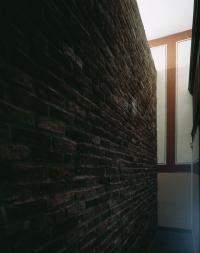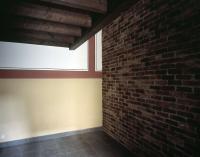What Sol LeWitt is doing in his space-sound installation is not reconstructing something, but rather performing an exemplary deconstruction of history and thus also critically questioning the way we are accustomed to recalling past events. It deals with an experience of loss conveyed spatially and acoustically, with making reference to something that is simply no longer there, and with the associated consequences for the present. It would also be a complete misunderstanding to want to see a return to the supposedly intact Jewish world in Stommeln or anywhere else before National Socialism. At issue first and foremost are the recollection of an empty space, something that eludes direct experience, and finally also the critical sounding of artistic possibilities and serious aesthetic experience in the present. The means Sol LeWitt selects to do so are conceptual and minimalist in the broadest sense. He works with the available space, with a very reduced but all the more effective sculptural element (wall), and with the sounds being played “off stage.” It must be distinguished between the conception and the realization of this work. At the beginning there was a written concept and a drawing, which did not permit any doubt about the intended work. Then the work was executed, which put the idea on paper into concrete spatial and physical form. And in the end there are the viewers, who grasp the work, take it up with their senses, understand it, and of course interpret it subjectively. Thus the feelings, thoughts, and finally the physical presence of the people becoming involved in the work play an important role. They, the viewers, become participants in an aesthetic experience with an open outcome. Sol LeWitt unmistakably uses a reduced geometric vocabulary of forms, which he and other of his fellow American artists used in various ways for their “primary structures” as early as in the 1960s. However, the posture he assumes makes his work distinct from the very beginning. If due to this fundamental language of form one compares Sol LeWitt with his colleagues Donald Judd, Robert Morris, and Carl Andre, then one observes that he is never solely concerned with direct contemplation that enables gaining insight—for instance in the spirit of Frank Stella's “What you see is what you see.”



